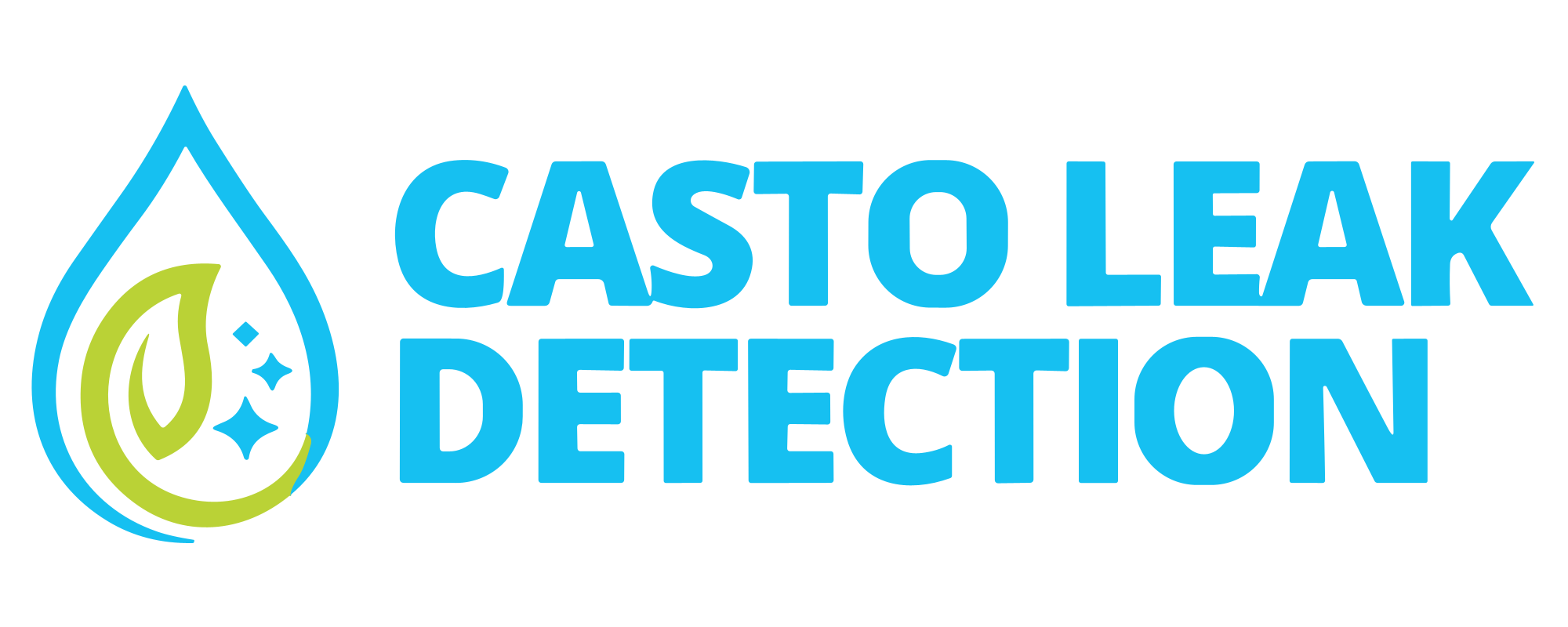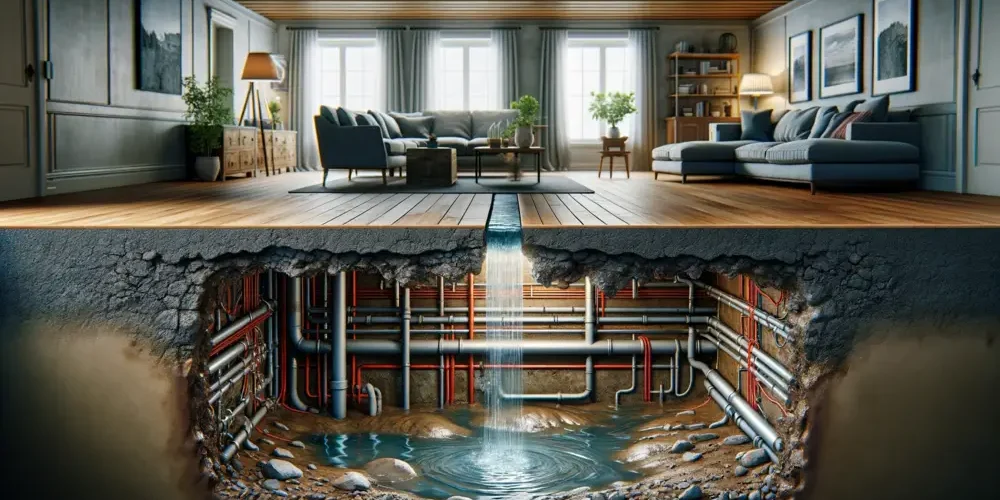Trenchless slab leak repair is a revolutionary method for fixing leaks under concrete slabs without extensive digging. Traditional methods of repairing slab leaks often involve significant disruption to homes and landscapes. However, trenchless technology offers a less invasive, cost-effective, and efficient solution. This comprehensive guide will explore trenchless slab leak repair, covering everything from identifying leaks to choosing the right contractor and understanding the future of this innovative technology.
Understanding Slab Leaks
What are Slab Leaks?
Slab leaks occur when the water pipes beneath a concrete slab foundation develop leaks. These leaks can result from various factors, including corrosion, abrasion, and ground movement. Common signs of slab leaks include unexplained increases in water bills, damp spots on floors, and the sound of running water when all faucets are off.
Consequences of Ignoring Slab Leaks
Ignoring slab leaks can lead to severe consequences. Structural damage is a significant risk, as water can erode the foundation and weaken the structural integrity of the building. Additionally, unchecked leaks can lead to higher water bills and potential health hazards due to mold growth. Addressing slab leaks promptly is crucial to prevent these issues.
Traditional Slab Leak Repair Methods
Traditional methods of repairing slab leaks often involve extensive excavation to access the damaged pipes. This approach can be highly disruptive and costly. While effective, it also has several drawbacks, including the destruction of landscaping and prolonged repair times. In contrast, trenchless slab leak repair offers a modern alternative with numerous advantages.
What is Trenchless Slab Leak Repair?
Definition and Process
Trenchless slab leak repair involves fixing leaks in underground pipes without digging large trenches. Instead, specialized equipment is used to access and repair the pipes from within. The process typically involves inserting a new pipe lining or bursting the old pipe and replacing it with a new one. This method minimizes disruption and preserves the surrounding landscape.
Types of Trenchless Slab Leak Repair
There are several types of trenchless slab leak repair techniques. Pipe lining involves inserting a flexible liner coated with resin into the damaged pipe. The resin hardens, creating a new pipe within the old one. Pipe bursting involves breaking the old pipe while simultaneously pulling a new pipe into place. Spot repair targets specific sections of the pipe that need repair, using similar trenchless methods.
Benefits of Trenchless Slab Leak Repair
Trenchless slab leak repair offers numerous benefits. It minimizes disruption to the property, as there is no need for extensive digging. This method is also cost-effective, reducing labor and restoration costs. Additionally, trenchless repairs are highly durable and provide long-term reliability, ensuring that the repaired pipes will function effectively for years to come.
How to Identify Slab Leaks
Visual Signs
Identifying slab leaks early can prevent significant damage. Visual signs of slab leaks include water stains on floors or walls, cracks in the foundation, and damp spots that persist despite dry weather. Monitoring your home for these signs can help you catch leaks early and seek prompt repair.
Auditory Signs
Auditory signs of slab leaks can be just as telling as visual ones. Listen for sounds of running water or hissing noises when no water is being used. These sounds often indicate a hidden leak beneath the slab. Unexplained drops in water pressure can also be a sign of a slab leak, prompting further investigation.
Professional Leak Detection
While homeowners can identify some signs of slab leaks, professional leak detection is often necessary for an accurate diagnosis. Modern leak detection techniques include acoustic listening devices, thermal imaging, and electronic leak detection. These methods allow professionals to pinpoint the exact location of the leak with minimal disruption.
Preparing for Trenchless Slab Leak Repair
Initial Inspection
Before starting trenchless slab leak repair, a thorough initial inspection is essential. This inspection assesses the extent of the leak, determines the best repair method, and provides an estimate of costs and timelines. A professional inspection ensures that all factors are considered, leading to an effective repair plan.
Site Preparation
Proper site preparation is crucial for a successful trenchless slab leak repair. This involves clearing the area around the repair site, ensuring access to necessary utilities, and implementing safety precautions. Site preparation helps streamline the repair process and minimizes potential complications.
Communication with Contractors
Effective communication with contractors is vital throughout the trenchless slab leak repair process. Homeowners should understand the repair plan, set clear expectations, and ask pertinent questions. Open communication ensures that both parties are aligned and helps prevent misunderstandings during the repair.
The Trenchless Repair Process
Pipe Lining
Pipe lining is a common trenchless slab leak repair technique. The process involves inserting a flexible liner coated with resin into the damaged pipe. Once in place, the resin hardens, creating a new, durable pipe within the old one. This method is minimally invasive and highly effective for repairing leaks and restoring pipe integrity.
Pipe Bursting
Pipe bursting is another trenchless repair method used for severely damaged pipes. The process involves breaking the old pipe while simultaneously pulling a new pipe into place. This technique is ideal for replacing pipes that are too damaged for lining and ensures a seamless, long-lasting repair.
Spot Repair
Spot repair targets specific sections of the pipe that need attention. This method uses similar trenchless techniques, such as pipe lining or pipe bursting, but focuses on smaller areas. Spot repair is a cost-effective solution for isolated leaks and can be completed quickly with minimal disruption.
Cost Considerations
Factors Affecting Cost
Several factors can influence the cost of trenchless slab leak repair. The size and location of the leak, the type of trenchless repair used, and contractor fees all play a role in determining the final cost. Understanding these factors helps homeowners budget appropriately and avoid unexpected expenses.
Comparing Costs with Traditional Methods
When comparing costs, trenchless slab leak repair often proves more cost-effective than traditional methods. While the upfront cost may be similar, trenchless methods reduce labor and restoration costs, leading to long-term savings. Additionally, minimal disruption means less inconvenience and potential loss of use for the property.
Budgeting for Repairs
Proper budgeting is essential for any repair project. Homeowners should estimate total expenses, consider financing options, and explore cost-saving tips. Budgeting for trenchless slab leak repair ensures that the project proceeds smoothly and without financial strain.
Choosing a Trenchless Slab Leak Repair Specialist
Qualifications and Experience
Selecting a qualified and experienced specialist is crucial for successful trenchless slab leak repair. Homeowners should look for certifications, evaluate experience, and check references and reviews. A well-qualified specialist ensures high-quality workmanship and effective repair.
Questions to Ask Potential Contractors
Before hiring a contractor, homeowners should ask pertinent questions about previous projects, the repair process, and warranty and guarantees. Understanding these aspects helps homeowners make informed decisions and ensures they select the best contractor for their needs.
Red Flags to Watch Out For
Homeowners should be aware of red flags indicating unreliable contractors. Warning signs include a lack of proper licensing, vague estimates, and poor communication. Avoiding these red flags helps ensure quality workmanship and a successful repair.
Post-Repair Considerations
Inspecting the Work
After the trenchless slab leak repair is complete, homeowners should inspect the work to ensure proper repair. Checking for signs of further leaks and seeking professional inspection recommendations can help confirm the repair’s effectiveness.
Maintenance Tips
Regular inspections and preventative measures are crucial for maintaining the integrity of repaired pipes. Homeowners should monitor for signs of future leaks and follow maintenance tips to prolong the lifespan of their plumbing system.
Warranty and Guarantees
Understanding the warranty and guarantees provided by the contractor is essential. Homeowners should know what is covered, what is not, and how to handle warranty claims if issues arise. A clear understanding of the warranty ensures peace of mind and protection for the investment.
Case Studies and Real-Life Examples
Residential Success Stories
Residential success stories highlight the effectiveness of trenchless slab leak repair. Homeowners share their experiences, showcasing before and after comparisons and lessons learned. These stories provide valuable insights and reassurance for those considering trenchless repairs.
Commercial Success Stories
Commercial properties also benefit from trenchless slab leak repair. Examples include businesses that have successfully addressed slab leaks with minimal disruption and long-term benefits. These case studies demonstrate the versatility and effectiveness of trenchless technology in various settings.
Lessons from Failed Repairs
Learning from failed repairs is crucial to avoid common mistakes. Case studies of failed repairs highlight the impact of improper techniques and the importance of choosing qualified professionals. Understanding these lessons helps homeowners make informed decisions and ensure successful repairs.
Future of Trenchless Technology
Technological Advancements
The future of trenchless technology looks promising, with ongoing technological advancements improving repair efficiency and effectiveness. Innovations in materials, equipment, and techniques continue to enhance the capabilities of trenchless repairs.
Environmental Benefits
Trenchless technology offers significant environmental benefits, including reduced environmental impact and sustainability considerations. The minimal disruption to landscapes and reduced waste contribute to the long-term benefits for communities and the environment.
Industry Adoption
The adoption of trenchless technology is growing within the industry. Increasing acceptance among contractors and homeowners alike is driving the future outlook for trenchless slab leak repair. As more people recognize its benefits, trenchless technology will continue to evolve and expand.
Frequently Asked Questions (FAQs)
General Questions
- What is trenchless slab leak repair?
Trenchless slab leak repair is a method of fixing leaks in underground pipes without extensive digging, using specialized equipment to repair from within.
- How does trenchless slab leak repair compare to traditional methods?
Trenchless methods are less invasive, cost-effective, and quicker, with minimal disruption compared to traditional excavation methods.
- How long does the trenchless repair process take?
The duration varies depending on the extent of the damage, but trenchless repairs are generally faster than traditional methods.
Cost and Budget
- What factors influence the cost of trenchless slab leak repair?
Factors include the size and location of the leak, the type of trenchless repair used, and contractor fees.
- Are there financing options available for trenchless slab leak repair?
Many contractors offer financing options to help homeowners manage the cost of repairs.
- Can insurance cover the cost of trenchless slab leak repair?
Some insurance policies may cover the cost, but it’s essential to check with your provider and understand the terms.
Choosing a Contractor
- What should I look for in a trenchless slab leak repair contractor?
Look for certifications, experience, positive reviews, and reliable references to ensure quality workmanship.
- How can I verify a contractor’s qualifications?
Check for proper licensing, and certifications, and ask for references from previous clients to verify their qualifications.
- What questions should I ask before hiring a contractor?
Inquire about previous projects, the repair process, warranties, and guarantees to ensure you choose the right contractor.
Post-Repair Considerations
- How do I maintain my plumbing system after trenchless slab leak repair?
Regular inspections, following maintenance tips, and monitoring for signs of leaks can help maintain the system’s integrity.
Conclusion
Trenchless slab leak repair is a modern, efficient solution for fixing leaks under concrete slabs. Understanding the process, benefits, and potential costs can help homeowners make informed decisions and ensure successful repairs.
Choosing the right repair method and consulting with qualified professionals is crucial. Trenchless technology offers numerous benefits, making it a preferred choice for many homeowners.
Taking the first step towards trenchless slab leak repair can prevent significant damage and long-term costs. By addressing leaks promptly and effectively, homeowners can ensure the longevity and reliability of their plumbing systems.






